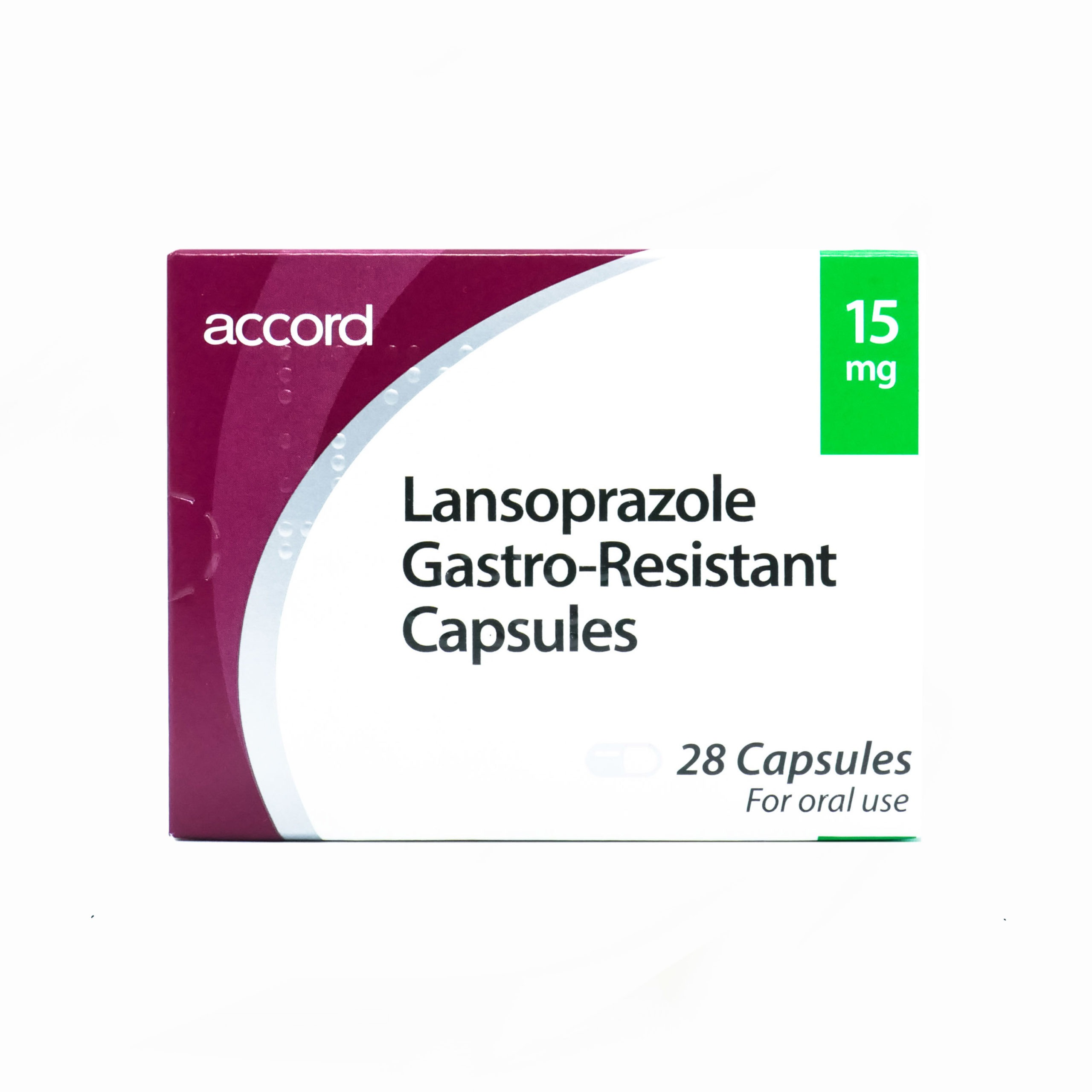Lansoprazole Capsules
Description
What is Lansoprazole?
Lansoprazole is a medication that is used to reduce the production of acids in the stomach. Lansoprazole belongs to a class of acid reducers known as proton pump inhibitors or PPIs. It can be the sole active ingredient in heartburn medications that provide long-term relief of symptoms, or it can be combined with an additional active component that aids in lansoprazole's absorption.
How Does Lansoprazole Work?
Stomach acids play an important role in the digestive process by breaking down food before it reaches the intestines. To protect the oesophagus from these chemicals the oesophageal sphincter contains a group of muscles that act as a one-way barrier that only allows the passage of food. However, the oesophagal sphincter can occasionally weaken, allowing stomach acid to spill over the barrier and into the oesophagus, causing acid reflux. lansoprazole is a proton pump inhibitor that works by blocking the activity of proton pumps (proteins that create acid in the stomach). This lowers stomach acid levels and reduces pain from acid reflux.
Conditions that can be Treated by Lansoprazole
Lansoprazole primarily works by lowering stomach acid production. However, it can also be used to treat the following conditions:
- Treatment of duodenal and stomach ulcer
- Treatment of inflammation in the oesophagus
- Treatment of heartburn and acid regurgitation
- Treatment of Zollinger-Ellison syndrome.
Warnings
Before taking Lansoprazole Tablets, contact your doctor or pharmacist if:
- You have liver problems or osteoporosis.
- If you're pregnant, trying to conceive, or nursing.
- Are due for an endoscopy.
- You are allergic to other proton pump inhibitors.
Directions
- Always follow your prescriber's instructions carefully and check with them if you are unsure about anything.
Take once daily, 30 minutes before a meal, with a full glass of water. Swallow the capsule whole.
Ingredients
- The active ingredient is Lansoprazole
- The inactive ingredients are titanium dioxide, hypromellose, talc, magnesium carbonate, triethyl citrate, mannitol, sugar spheres, among others.
Side Effects
- Convulsions
- Severe stomach pain
- Severe diarrhoea with bloody or watery stool
- Blistering skin
You must stop taking Lansoprazole and seek immediate medical assistance when you experience these or more effects.
FAQs
1. How should I take Lansoprazole?
Take once daily, 30 minutes before a meal, with a full glass of water. Swallow the capsule whole.
2. How long does it take to work?
It can start providing relief within 1-2 hours, but full benefits may take a few days.
3. Can I take it with antacids?
Yes, antacids can be used alongside Lansoprazole, but consult your doctor.
4. Is long-term use safe?
Long-term use can increase the risk of bone fractures and deficiencies. Regular medical review is recommended.
5. Can children use Lansoprazole?
Yes, but only under medical supervision.


